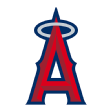This time next week, we'll be headlong into the 2018 postseason, a free-for-all that as of today only 11 teams still have a chance to take part in. Either the Cubs, Brewers, Cardinals, Dodgers or Rockies will join the other 19 in getting a head start on their hot stove plans.
It was not that long ago that the field of postseason hopefuls was considerably larger. Based on simulations, there were 20 teams that at some point after the All-Star break harbored at least a 1-in-10 chance at playing on into October. That means, if we subtract those 11 squads still playing for something, there are nine hopefuls who have fallen short. They are:
Obviously some of those near misses are nearer than others, but this is still an interesting class of teams. The narrative is just a little bit different for all of them. Whether it's an impatient fan base (Pittsburgh, Seattle), a closing window (Arizona, Los Angeles), free-agent uncertainty (Washington), the specter of a possible rebuild (San Francisco) or a sense that the best is yet to come (Tampa Bay, Minnesota, Philadelphia), these teams typify what it means to be in baseball's middle class. That is, the next move is crucial.
Let's consider some key decisions that lie ahead for 2018's class of also-rans.
 Arizona Diamondbacks: When the shape of your run at contention looks like a ski slope, the finish to your season is a big disappointment. The Diamondbacks went from a 63 percent chance at the playoffs on Aug. 23 to zero in less than a month. What's next?
Arizona Diamondbacks: When the shape of your run at contention looks like a ski slope, the finish to your season is a big disappointment. The Diamondbacks went from a 63 percent chance at the playoffs on Aug. 23 to zero in less than a month. What's next?
The culprits of the Arizona demise have been too broad to suggest targeted action. During their collapse, the Diamondbacks ranked last in the majors in batting average (.211), 28th in slugging (.351) and 28th in runs. The rotation held up well enough, but the Arizona bullpen went into a tailspin, with a 5.58 ERA over the past month. Arizona was 14-14 in one-run games at the All-Star break. Since then, the Diamondbacks are 4-15 and have lost nine straight.
The headlines for the Arizona offseason will be dominated by the free agency of core performers A.J. Pollock and Patrick Corbin. After an MVP-level start, Pollock's season went off the rails when he broke his thumb in mid-May trying to make a diving catch. Pollock had an OPS of .969 at the time, and a .691 OPS since he returned. That's unfortunate, but the bottom line is that over the past three seasons, Pollock has been just a little bit better than league average at the plate.
As for Corbin, he's been a top-five pitcher in the National League this season and emerged as one of the top lefties in baseball. He did so with a big leap in strikeout rate, with a sizable cut in walk rate. His FIP (2.47) is even more sparkling than his ERA (3.23). Not a bad platform season.
So should Arizona be willing to invest heavily to keep this core together? Will there be any money left to fill in the gaps? Should the Diamondbacks pivot and go into a rebuild? If it's the latter, do they then trade franchise cornerstone Paul Goldschmidt, who will be a free agent after next season?
The questions in Arizona go way beyond filling in roster holes. It's a big-picture kind of winter looming for the Diamondbacks.
 Los Angeles Angels: The Angels once again enter the offseason knowing they have the game's best building block in Mike Trout. Yet this knowledge is of diminishing solace for an organization that has played just three postseason games during Trout's brilliant career.
Los Angeles Angels: The Angels once again enter the offseason knowing they have the game's best building block in Mike Trout. Yet this knowledge is of diminishing solace for an organization that has played just three postseason games during Trout's brilliant career.
With reports suggesting the Angels might make a run at giving Trout a lifetime contract, the focus will once again be on the best player in franchise history. Trout is not the only thing the Angels have going for them, though. Shortstop Andrelton Simmons is one of the top 25 players in the game, and Shohei Ohtani, even as he recovers from Tommy John surgery, looks like an elite hitter.
The first order of business will be deciding on the future of manager Mike Scioscia. Is it finally time for a new voice in the dugout? If so, who?
This might or might not tie into the team's dilemma involving future Hall of Famer Albert Pujols. With Ohtani DH'ing full time, how much will or can the Angels afford to carry Pujols at first base? Will a new skipper, under the gun to prove himself, continue to pencil in Pujols daily as a sub-replacement player?
Unlike past seasons, the Angels have the benefit of a farm system that has been climbing up the prospect rankings. For once, the Angels might be able to focus on stopgap types with hopes that they'll soon be able to fill holes from within.
But until the system is ready to provide starting-pitching solutions, that has to be the focus of the Angels' offseason. One way or another, the Angels must find a full season's worth of stable rotation innings, a project made that much more challenging by Ohtani's injury.
Meanwhile, if these speculated talks with Trout don't bear fruit, then the clock starts ticking. He's under contract for two more seasons. Can the system provide enough internally generated momentum in time to make Anaheim the place where Trout wants to spend the rest of his prime seasons?
 Minnesota Twins: In a Q&A with Baseball Prospectus, general manager Thad Levine talked about the club's plan to keep the payroll decks clear for this offseason and beyond. They've certainly done that. With Joe Mauer among others coming off the books, Minnesota has money to spend.
Minnesota Twins: In a Q&A with Baseball Prospectus, general manager Thad Levine talked about the club's plan to keep the payroll decks clear for this offseason and beyond. They've certainly done that. With Joe Mauer among others coming off the books, Minnesota has money to spend.
The 2018 season threw a wrench into the plan, however, because of the forgettable seasons posted by Miguel Sano and Byron Buxton. They were supposed to be two of the linchpins of the future Twins lineup, eventually joined by top prospect Royce Lewis. Instead, the duo combined to be nearly a win below replacement in 2018.
The Twins have money to burn, young arms ascending to the big league staff and a position-player picture that could look a lot rosier a year from now. The question is: Just how aggressive should the Twins be this winter after a season of mixed messages?
 Philadelphia Phillies: The Phillies were aggressive during the season, adding a number of veterans to bolster an ill-fated push for the postseason. The good news is that Philadelphia didn't really empty its prospect coffers to bring in veteran free-agents-to-be like Wilson Ramos, Asdrubal Cabrera and Aaron Loup.
Philadelphia Phillies: The Phillies were aggressive during the season, adding a number of veterans to bolster an ill-fated push for the postseason. The good news is that Philadelphia didn't really empty its prospect coffers to bring in veteran free-agents-to-be like Wilson Ramos, Asdrubal Cabrera and Aaron Loup.
So the Phillies can get back on course with a system that should help to bolster the pitching staff from within. Philadelphia still has a plethora of hard-throwing relief options, and there is still hope for further development for the rotation options beyond Aaron Nola and Jake Arrieta.
There are a lot of questions about the position-player group, mostly because we keep hearing that the Phillies will be all-in on the pursuits of this winter's top free agents -- Bryce Harper and Manny Machado. Landing either, or both, would certainly shake things up.
Until that happens, the questions for manager Gabe Kapler are a little simpler in scale. How does he get better defense? Well, that actually shouldn't be too difficult. The better question: How does Kapler get plus defense? Will he try to play Carlos Santana at third base on a regular basis, freeing up first base for Rhys Hoskins? Can Scott Kingery and J.P. Crawford take their next steps? Have the Phils finally had it with Maikel Franco and Odubel Herrera?
 Pittsburgh Pirates: The Pirates have a good shot at a plus-.500 this season. That might not set a lot of Steel City hearts on fire, but let's remember that Pittsburgh finished under .500 in every season from 1993 to 2012.
Pittsburgh Pirates: The Pirates have a good shot at a plus-.500 this season. That might not set a lot of Steel City hearts on fire, but let's remember that Pittsburgh finished under .500 in every season from 1993 to 2012.
Pittsburgh is mediocre, as it was last year, but at least now it's a younger variety of mediocre. There should be some turnover in the middle infield, and a possible return to the majors by Jung Ho Kang. These are incremental changes, not sweeping, but that's the way it's going to look.
More than anything, for Pittsburgh to move from middling to meaningful, it needs some star power from its position players. The Pirates are not going to buy this star power on the free-agent market. Nor are they likely to trade for it. That leaves someone emerging from the system, and it just doesn't seem like that player is there right now.
What the Pirates have is the makings of a solid pitching staff, so maybe the answer for the position guys is to go all-in on defense, speed and a well-rounded attack in the absence of high-level power threats. In other words, as we look for teams to successfully push against the all-or-nothing offensive trends, the Pirates are as good a candidate as anybody to take that approach.
Otherwise, your 2019 Pirates could look a whole lot like your 2018 Pirates. Time for this team to forge an identity.
 San Francisco Giants: The Giants are baseball's crossroads team. They are old. Their farm system is thin. Their payroll is expensive. And they are transitioning to a new chief baseball decision-maker. There is no telling what this winter will look like for San Francisco.
San Francisco Giants: The Giants are baseball's crossroads team. They are old. Their farm system is thin. Their payroll is expensive. And they are transitioning to a new chief baseball decision-maker. There is no telling what this winter will look like for San Francisco.
You could see the Giants once again take that surest of paths to the middle, taking on a fading veteran to fill a hole. They could bite the bullet, trade Madison Bumgarner, and start building the organization from the bottom up. Or they might sign Harper.
Everything rides on the identity of the replacement for recently reassigned GM Bobby Evans. That person, once hired, will be facing quite a challenge.
 Seattle Mariners: The Mariners finish the season with baseball's oldest roster, weighted for playing time. Longtime DH Nelson Cruz hits free agency, but there has already been a lot of rhetoric about bringing him back to Seattle.
Seattle Mariners: The Mariners finish the season with baseball's oldest roster, weighted for playing time. Longtime DH Nelson Cruz hits free agency, but there has already been a lot of rhetoric about bringing him back to Seattle.
The Mariners have an empty minor-league system and a mint's worth of guaranteed money left on the books, so Seattle might as well go for it. But we have to once again return to the Mariners' oft-discussed 2018 run differential. Just as that iffy indicator foretold the likely decline that actually happened, it also serves as the baseline for what Seattle does going forward.
Another way to state that: The Mariners might end up with 88 wins, but they did not perform as an 88-win team. They are more like a 77-win team, and they are a 77-win team with an old roster. If Seattle were really an 88-win team in terms of baseline talent, it would be pushing this winter to hold its ground. Instead, in a division with the Athletics, Astros and Angels, there is a lot of ground to make up.
How do the Mariners make up that ground? Probably with more money, to be frank. Robinson Cano, who has five more seasons at $24 million per year left on his deal, might need to shift to an easier spot on the defensive spectrum. That would put him at first base, leaving Dee Gordon as the everyday second baseman.
Assuming the M's retain Cruz, that leaves the outfield slots that don't belong to star right fielder Mitch Haniger to target. Harper is probably out, and once you get past him, you don't have a lot of foundation pieces hitting free agency. Pollock is one guy you might target as a change-of-scenery candidate. Maybe Nick Markakis.
Either way, the Mariners are going to have to reset sooner than later. Chances are it won't be this winter.
 Tampa Bay Rays: By moving pretty much every veteran off the roster since the end of last season, and opening the door for the Rays' waves of faceless prospects, the offseason work has mostly already been done. Let it ride and see if the success Tampa Bay has enjoyed since the trade deadline can be replicated for a full season.
Tampa Bay Rays: By moving pretty much every veteran off the roster since the end of last season, and opening the door for the Rays' waves of faceless prospects, the offseason work has mostly already been done. Let it ride and see if the success Tampa Bay has enjoyed since the trade deadline can be replicated for a full season.
 Washington Nationals: To Bryce or not to Bryce? The Nationals will probably offer a half-billion or so to Harper, and he'll take it or he won't. Given the emergence of Juan Soto and the potential rise of fellow rookie outfielder Victor Robles, the outcome of that might be more impactful on the Nationals' brand than anything else.
Washington Nationals: To Bryce or not to Bryce? The Nationals will probably offer a half-billion or so to Harper, and he'll take it or he won't. Given the emergence of Juan Soto and the potential rise of fellow rookie outfielder Victor Robles, the outcome of that might be more impactful on the Nationals' brand than anything else.
The Nationals will want some insurance or a platoon partner to go with Ryan Zimmerman at first base. And they'll need an everyday second baseman. There are some good ones hitting the market -- Jed Lowrie, Brian Dozier, DJ LeMahieu.
Beyond that, the Nationals could bring back largely the same team and be right back in the thick of contention in 2018. They've been a victim of bad luck, variance, injuries -- all stuff that can flip from one season to the next. And they have the upside that comes with having players on the upward slope like Soto, Robles and Trea Turner.
It's been a rough season, but whether or not Harper leaves, there is no reason for the Nationals to panic.
